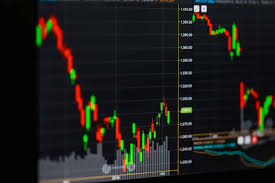
Understanding Forex Trading Charts: A Comprehensive Guide
Forex trading charts are vital tools for traders worldwide. They provide visual representations of price movements, allowing traders to analyze market trends and make informed decisions. In this guide, we will delve into the different types of Forex trading charts, their features, and how to utilize them effectively in your trading strategy. For further insights and resources, visit forex trading charts https://forex-exregister.com/.
The Importance of Forex Trading Charts
In the fast-paced world of Forex trading, the ability to interpret data quickly can make a significant difference in a trader’s success. Forex trading charts are crucial as they provide historical data and price action, which are essential for making predictions about future price movements. By analyzing these charts, traders can identify patterns, trends, and potential reversal points in the market.
Types of Forex Trading Charts
There are several types of Forex trading charts that traders can use to analyze the market. Each type has its own advantages and is suited for different trading styles.
1. Line Charts
Line charts are one of the simplest forms of Forex trading charts. They display the closing prices of a currency pair over a specified period, connecting these points to form a line. This type of chart is particularly helpful for viewing overall market trends and is preferred by traders who want to see a clear, unobstructed view of price movement.
2. Bar Charts
Bar charts provide more information than line charts, displaying the open, high, low, and close (OHLC) prices within a specified time frame. Each vertical line represents the price range for that period, while the horizontal ticks indicate opening and closing prices. Bar charts are favored by traders who need more detailed information on price action.
3. Candlestick Charts
Candlestick charts are similar to bar charts but provide a more visual representation of price movements. Each “candle” shows the open, high, low, and close prices. Candlestick patterns can signal market sentiment, making them invaluable for traders looking for potential entry and exit points. Understanding candlestick patterns is essential for successful Forex trading.
Choosing the Right Chart Type
The choice of chart type largely depends on individual trading styles and preferences. Day traders may prefer candlestick charts for their detailed information, while long-term traders might opt for line charts to get a clearer view of the overall trend. It is essential to experiment with different chart types and find what works best for your trading approach.
Timeframes in Forex Trading Charts
Another critical aspect of Forex trading charts is the timeframe they represent. Timeframes can range from seconds to months and can greatly influence trading decisions. Here are some common timeframes used by traders:
- 1-Minute Charts: Best for scalpers looking for quick profits in volatile markets.
- 5-Minute and 15-Minute Charts: Ideal for day traders who need to capture smaller price movements.
- H1 and H4 Charts: Useful for swing traders aiming for profits over a few days.
- Daily and Weekly Charts: Suited for long-term traders who focus on broader market trends.
Technical Indicators and Forex Trading Charts
Forex trading charts can be enhanced with technical indicators to provide additional insights. Indicators such as moving averages, Bollinger bands, and RSI (Relative Strength Index) can help traders identify potential entry and exit points. By combining chart analysis with technical indicators, traders can develop more robust trading strategies.
Chart Patterns and Their Significance
Chart patterns are formations that occur on trading charts and can indicate future price movements. Recognizing these patterns can significantly improve a trader’s ability to anticipate market changes. Some common chart patterns include:
- Head and Shoulders: Indicates potential reversal in trend.
- Double Top and Bottom: Signals possible trend reversal.
- Triangles: Suggests continuation of the current trend.
Reading Forex Trading Charts
Reading Forex trading charts involves understanding price movements, volume, and market sentiment. Here are some steps to help you read charts effectively:
- Identify the trend: Look for upward, downward, or sideways trends.
- Use support and resistance levels: These are price points where the market has historically reversed.
- Apply technical indicators: Enhance your analysis with indicators to confirm signals.
- Look for patterns: Identify chart patterns that may signal reversals or continuations.
Common Mistakes to Avoid
While trading with Forex charts can be highly beneficial, certain mistakes can hinder your success. Here are some pitfalls to avoid:
- Ignoring the Bigger Picture: Focusing solely on short-term charts can lead to missing broader market trends.
- Overcomplicating Your Analysis: Using too many indicators can create confusion. Stick to a few that work for you.
- Neglecting Risk Management: Always have a risk management strategy in place, regardless of the signals from the charts.
Conclusion
Forex trading charts are indispensable tools for traders looking to navigate the currency markets effectively. Understanding the different types of charts, timeframes, technical indicators, and common patterns can empower traders to make informed decisions. By continually improving your chart reading skills and avoiding common mistakes, you can enhance your trading performance and achieve your financial goals. Remember, every successful trader invests time in learning how to read and interpret Forex trading charts, so start today!

